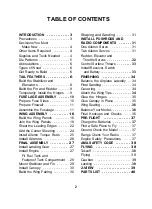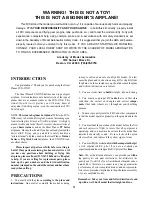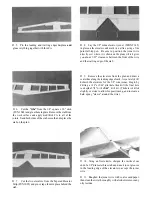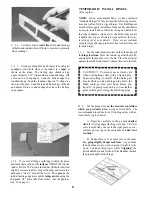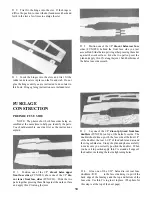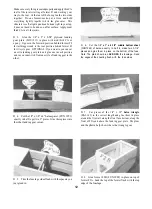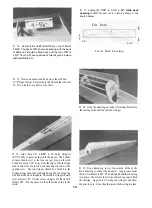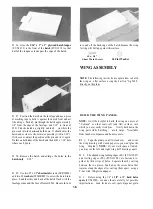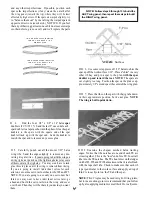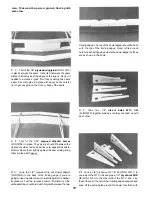
I—I 6. Carefully draw a centerline all around the edges
of the fin and rudder (this will help to maintain symmetry
when sanding).
TEMPORARILY INSTALL HINGES
(Do not glue)
NOTE: On an experimental basis, we have included
"laminated hinges" in this kit, and the following instruc-
tions are written for this type of hinge. Our R&D depart-
ment has thoroughly tested these hinges and found them to
be easy to install and sufficiently strong and durable for
this type of airplane. However, as the kit builder you are
reminded that you are ultimately responsible for the struc-
tural integrity of your aircraft. If you are not confident
using this type of hinge, please feel free to substitute your
favorite hinge.
I_I 1. Lay the rudder and elevators on the plan and mark
the hinge locations. Place the rudder against the fin TE
and transfer the marks over to the fin. Place the elevators
against the slab TE and transfer the marks over to the slab.
1—1 7. Using a sanding block and coarse (50 or 80-grit)
sandpaper, sand both sides of the rudder to a taper as
shown on the plans. The trailing edge should end up
approximately 3/32" wide and have a rounded shape. (Do
not sand to a sharp edge). Sand the bottom edge to a
rounded shape. Sand the leading edge to a "V-shape" as
shown on the plan. Sand the lop and front edges of the fin
and dorsal fin to a rounded shape but leave the trailing
edge square.
CAUTION!!!: You must use extreme care
when cutting hinge slots with an Xacto knife,
to avoid cutting yourself! If the balsa part
breaks while you are pushing on the knife, the
blade could go into your hand before you
know it! A good precaution is to wear leather
gloves while performing the following steps.
D 2. Cut the hinge slots on the accurate centerlines
which you previously drew, using an Xacto knife. The
recommended procedure for cutting hinge slots with an
Xacto knife is given below.
A. Begin by carefully cutting a very shallow
slit in the trailing edge at the hinge location. This first
cut is to establish your cut in the right place, so con-
centrate on staying on the centerline and don't cut
too deep!
B. Make three or four more cuts in the same
line, going slightly deeper each time. As you make
these additional cuts, work on going straight into the
wood. Continue this process while "wiggling" the
knife handle back and forth until the blade has reached
the proper depth for the hinge.
I_I 8. If you arc building a taildragger- check the plans
and mark the location of the tailgear (WBNT128) on the
rudder. Drill a 7/64" hole in the rudder (the hole is drilled
slightly oversize to allow for positioning, and to create a
hard epoxy "sleeve" around the wire). Then groove the
rudder leading edge to accept the tail-gear wire using the
sharpened 1/8" brass tube from earlier. (Sec the photo at
step 10 on page 7).
9
Summary of Contents for FUN-ONE
Page 5: ...5...


